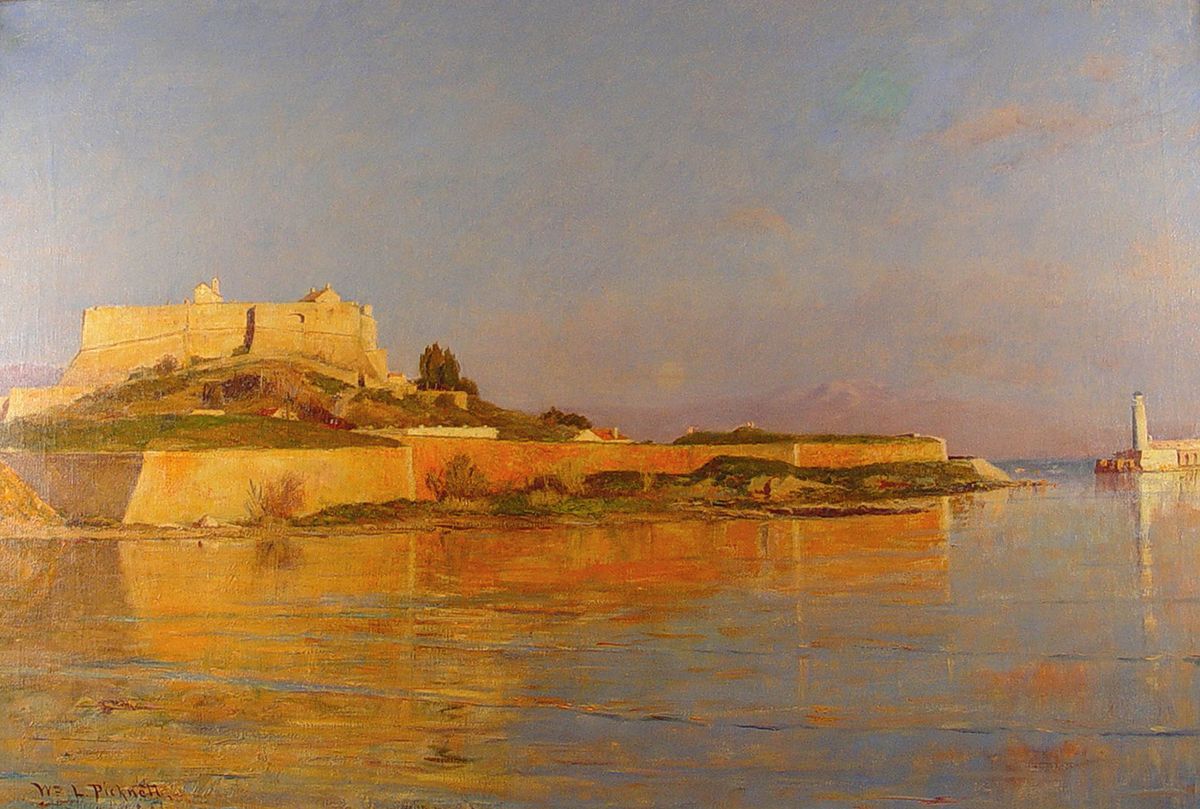William Lamb Picknell (1853–97)
Le déclin du jour (Fort Carré, Antibes, France), c. 1895
Oil on canvas
McMullen Museum of Art, Boston College, Gift of Alexandria & Michael N. Altman P’22, ’24, ’26, 2019.3

Jeffery Howe
Professor Emeritus, Art History

Washed in the warm light of the setting sun, the massive sixteenth-century Fort Carré at Antibes rises above the harbor. The sky is clear, and the calm surface of the water creates the effect of a frozen moment. At right, a lighthouse beckons to sailors, a gentle counterpoint to the ancient defensive fortress. Both structures offer shelter and protection.
New England artist William Lamb Picknell lived near the forest of Fontainebleau (southeast of Paris) in the 1890s, but spent winters in the south of France. He exhibited Le déclin du jour at the Paris Salon of 1895. Picknell was related to the philosopher Ralph Waldo Emerson, and the brilliant light of his painting is related to both Transcendentalism and the artistic style of luminism. The bright high-key effect of his paintings was called the “glare aesthetic” by the art historian William Gerdts to distinguish it from impressionism. The clarity of Picknell’s images radiates a serene contemplation of nature and the works of humans, a paradigm of enlightenment.
Picknell had studied with George Inness in Rome, and like the Swedenborgian artist found a spiritual connection to nature, which he expressed through painting. His cousin and close friend, Edward Waldo Emerson (Ralph Waldo’s son), said of Picknell: “Art to him was holy.”
Esteemed during his brief life, Picknell was overshadowed in the twentieth century by artists such as Picasso and Matisse who also painted scenes of Antibes in more radical styles. His reputation has been rising again, as alternatives to modernism are being reevaluated.
